Nationality New Zealand Name Burt Munro | Spouse Florence Martyn (m. 1927) | |
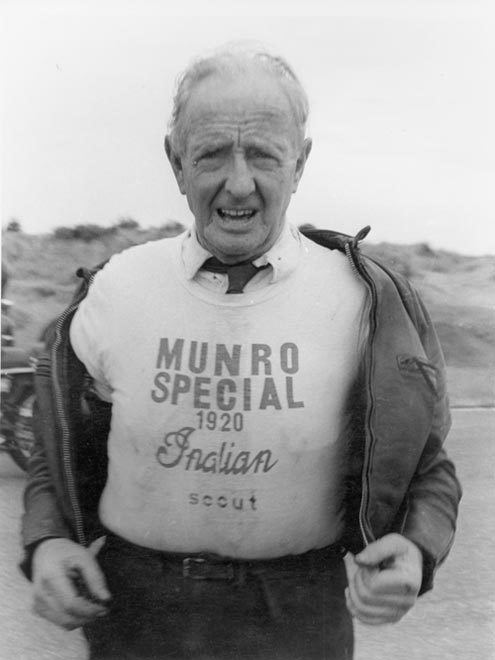 | ||
Full Name Herbert James Munro ('Burt') Occupation CarpenterNew Zealand Home GuardSpeedway riderMotorcycle salesmanMechanicLand Speed record holder Known for Land Speed record holder Children June Munro, John Munro, Margaret Munro, Gwen Munro | ||
Burt munro s 1920 indian scout
Herbert James "Burt" Munro (Bert in his youth; 25 March 1899 – 6 January 1978) was a New Zealand motorcycle racer, famous for setting an under-1,000 cc world record, at Bonneville, 26 August 1967. This record still stands; Munro was 68 and was riding a 47-year-old machine when he set his last record.
Contents
- Burt munro s 1920 indian scout
- Burt munro offerings to the god of speed
- Early life
- Challenges
- Bonneville Salt Flats and Speed Week
- Personal life
- Records
- Feature film The Worlds Fastest Indian
- 2013 Indian named Spirit of Munro
- References
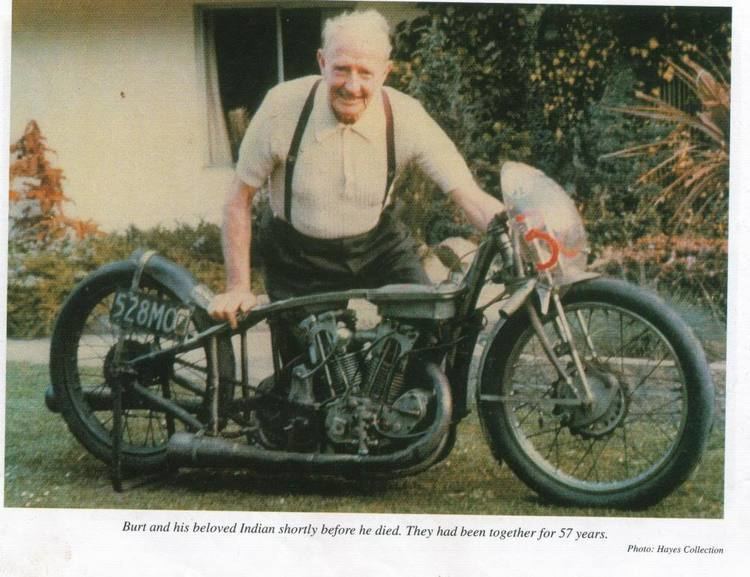
Working from his home in Invercargill, he worked for 20 years to highly modify the 1920 Indian motorcycle that he had bought that same year. Munro set his first New Zealand speed record in 1938 and later set seven more. He travelled to compete at the Bonneville Salt Flats, attempting to set world speed records. During his ten visits to the salt flats, he set three speed records, one of which still stands.
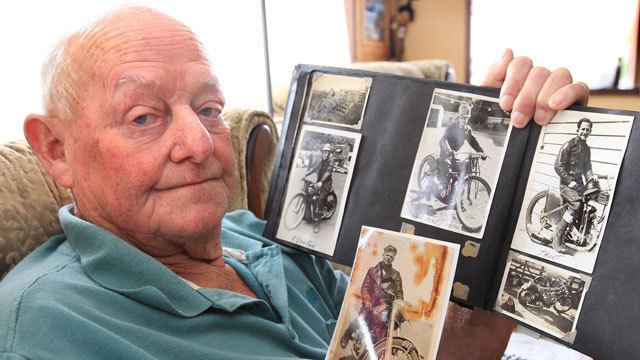
His efforts, and success, are the basis of the motion picture The World's Fastest Indian (2005), starring Anthony Hopkins, and an earlier 1971 short documentary film Burt Munro: Offerings to the God of Speed, both directed by Roger Donaldson.
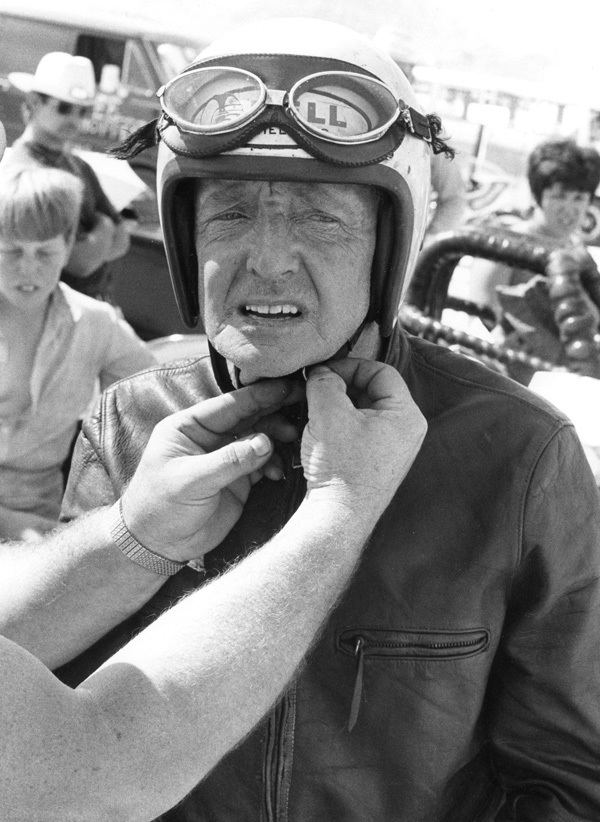
Burt munro offerings to the god of speed
Early life
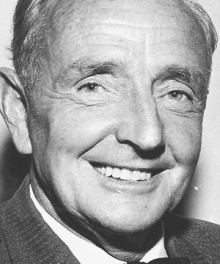
Munro was born in 1899 in Invercargill. His twin sister died at birth and Munro grew up on a farm in Edendale, east of Invercargill.

Munro's interest in speed began at an early age, riding the family's fastest horse across the farm, despite the complaints of his father. Trips via train to the port at Invercargill were a rare source of excitement, and the arrival of cars, motorcycles and aircraft added to Burt's eagerness to join the world outside his farm. As Munro's family discouraged his endeavours outside farm life, he became constantly bored with daily routine. At the outbreak of the First World War, he intended to go to war as soon as he was old enough, for a chance to see the world.
Munro remained on the family farm until the end of the First World War, when his father sold the farm. At that time, Munro worked on the Otira Tunnel construction until recalled to work with his father on a newly purchased farm. After this he became a professional speedway rider, but returned home to the family farm at the start of the Great Depression. Finding work as a motorcycle salesman and mechanic, he raced motorcycles and rose to the top of the New Zealand motorcycle scene, racing on Oreti Beach and later in Melbourne, Australia.
After the Second World War, Munro and his wife divorced, and he subsequently gave up work to reside in a lock-up garage.
Challenges
Munro's Indian Scout was a very early model, being only the 627th Scout to leave the American factory. The bike had an original top speed of 55 mph (89 km/h). But this did not satisfy Munro, so in 1926 he decided to start modifying his beloved Indian.
The biggest two challenges for Munro to overcome while modifying his bike were his lack of money and that he worked full-time as a motorcycle salesman. He would often work overnight on his bikes (he had a 1936 Velocette MSS as well), then he would go to work in the morning, having had no sleep the night before.
Because Munro was a man of modest means, he would often make parts and tools himself instead of having them professionally built. For example, he would cast parts in old tins, make his own barrels, pistons, flywheels, etc. His micrometer was an old spoke.
In its final stages, the Indian's displacement was 950 cc (as built it was 600 cc) and was driven by a triple chain drive system.
The "Munro Special," as Munro called his bike, is now owned by a motorcycle enthusiast in New Zealand's South Island, and is on display at E Hayes & Sons, Invercargill. There is also a second motorcycle purported to be the original "Munro Special" in Te Papa Museum in Wellington.
Bonneville Salt Flats and Speed Week
The Bonneville Salt Flats in northwestern Utah, USA are known worldwide for their many miles of flat, compacted salt; perfect for testing speed machines. During Speed Week, usually in mid-late August, vehicle enthusiasts from around the world gather at Bonneville.
Munro travelled to Bonneville ten times, the first time for "sightseeing" purposes. In the nine times he raced at Bonneville, Munro set three world records: first in 1962, then in 1966 and finally in 1967. He also once qualified at over 200 mph (320 km/h), but that was an unofficial run and was not counted.
Following the misspelling of his name in an American motorcycling magazine in 1957, Bert Munro changed his name to Burt.
Personal life
Munro had four children—John, June, Margaret, and Gwen—with his wife Florence Beryl Martyn, whom he married in 1927. They were divorced in 1947.
Having suffered from angina since the late 1950s, Munro suffered a stroke in 1977, and was admitted to hospital. He found his coordination had diminished. Frustrated, but wanting his motorcycles to remain in Southland, he sold both machines to a local dealer. Munro died of natural causes on 6 January 1978, aged 78 years. He is buried at Invercargill's Eastern Cemetery, along with his parents and brother.
Records
Feature film The World's Fastest Indian
Burt Munro was the subject of a 2005 film, The World's Fastest Indian, based on a composite of his Bonneville speed runs. This film depicts a determined old man who, despite facing many difficulties, travels from New Zealand to the USA to test run his motorcycle west of the Great Salt Lake. The disclaimer says: "While this motion picture is based upon historical events, certain characters names have been changed, some main characters are composites or invented and a number of incidents fictionalised."
2013 Indian named Spirit of Munro
In March 2016 Indian Motorcycle announced that it was producing a custom-built streamliner named the Spirit of Munro. The motorcycle was built to showcase the Thunder Stroke 111 engine to be used in one of the 2014 road models. The company said the Spirit of Munro Scout was a tribute to Munro's achievements with the Indian Scout and to all Indians of old.
